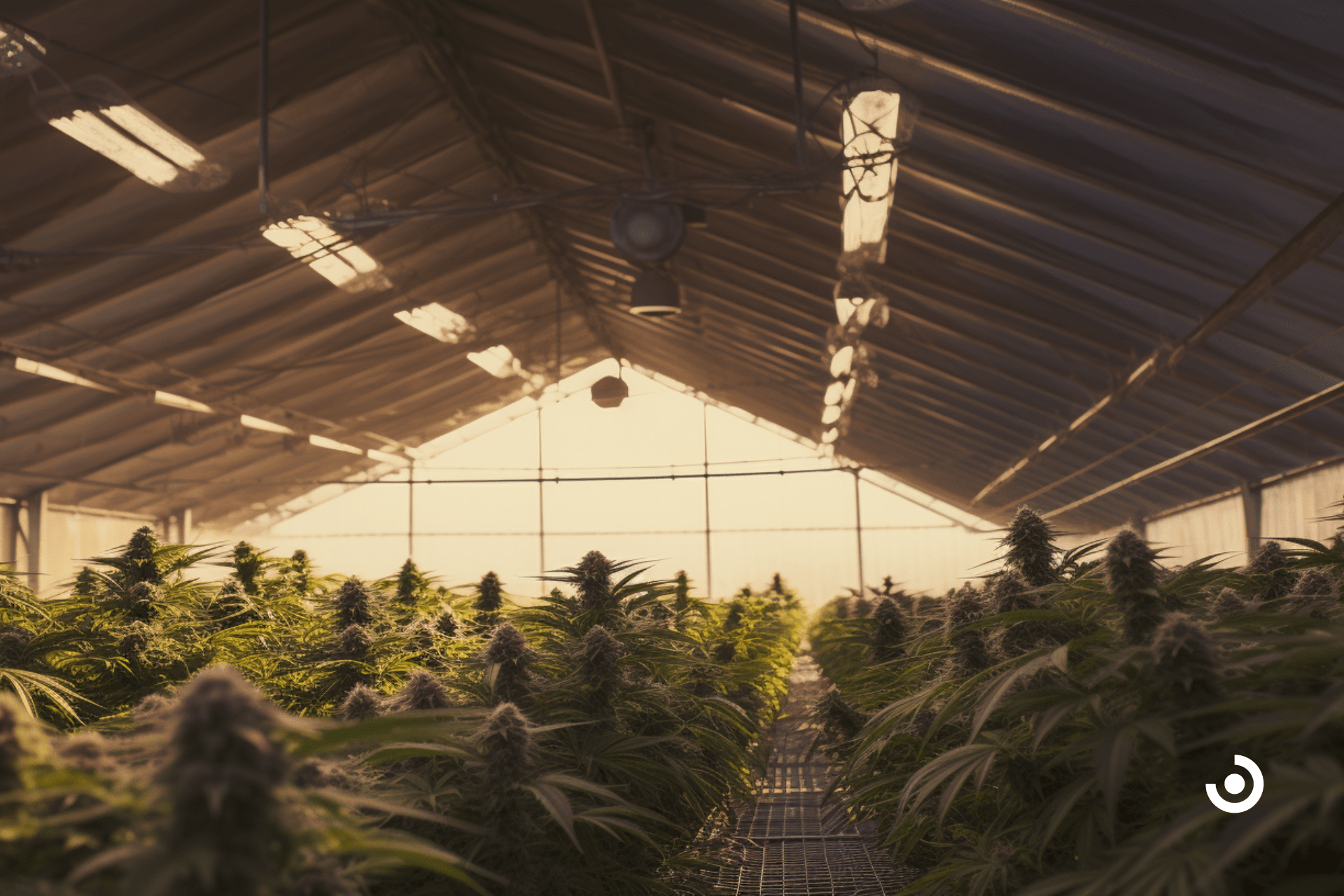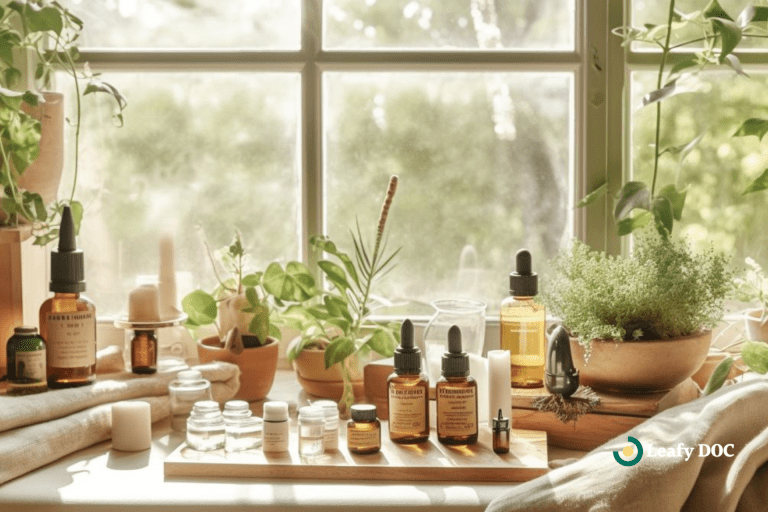Exploring Medical Cannabis Cultivation Practices
by Tayyaba Amir · January 2, 2024
Uncover the secrets to thriving medical cannabis cultivation practices. Master expert techniques for top-quality yields and start maximizing your results today. Dive into the world of medical cannabis cultivation now and revolutionize your growing game!

Are you ready to embark on an exciting journey into the world of medical cannabis cultivation? Prepare to be captivated by the wonders that await you as we explore the intricacies of this fascinating practice.
In this article, we will delve into the secrets of selecting the perfect cannabis strains, uncover the differences between indoor and outdoor cultivation methods, and learn how to nurture healthy plants that will yield the potent medicine you seek.
But that’s not all. We will also dive into the realm of proper nutrient and watering techniques, ensuring your plants receive the optimal care they need to thrive. And let’s not forget about the challenges of managing pests and diseases that can plague your precious crops.
Key Takeaways
- Selecting the right cannabis strains is important for medical cannabis cultivation, taking into consideration both the specific medical conditions being treated and the growing conditions.
- Both indoor and outdoor cultivation methods have their advantages and disadvantages. Indoor cultivation allows for more control over environmental conditions, but outdoor cultivation can benefit from natural sunlight and a larger growing space.
- Nurturing healthy cannabis plants requires proper feeding with the right nutrients and watering techniques. Balanced nutrition and adjusting pH levels are important factors in promoting plant health.
- Pruning and training techniques can help optimize plant growth and maximize yields. Monitoring environmental conditions, such as temperature and humidity, is also essential for successful cultivation.
Choosing the Right Cannabis Strains for Cultivation
First and foremost, you need to think about the specific medical conditions or symptoms that you’re aiming to address with your cannabis cultivation. Different strains have different levels of cannabinoids, such as THC and CBD, which have varying effects on the body. For example, if you’re looking to cultivate cannabis for pain relief, strains with higher CBD content may be more suitable. On the other hand, if you’re targeting symptoms like anxiety or insomnia, strains with higher THC content might be more effective.
Secondly, you should also take into account the growing conditions of your cultivation site. Some strains are more resilient and adaptable to different environments, while others require very specific conditions to thrive. It’s important to choose strains that are well-suited to your climate, available resources, and level of expertise. By doing so, you can maximize your chances of success and ensure a healthy and abundant yield.
Understanding Indoor vs. Outdoor Cultivation Methods
Imagine stepping into a lush, sun-kissed outdoor garden where the vibrant green cannabis plants sway gently in the breeze, contrasting with the controlled, artificial environment of an indoor cultivation facility. Outdoor cultivation offers a more natural approach to growing cannabis, utilizing the power of the sun and the elements to nurture the plants. This method allows for larger yields and typically results in plants with a higher terpene profile, providing a more robust and flavorful product. However, outdoor cultivation also comes with its challenges, such as vulnerability to pests, weather conditions, and the need for more space.
On the other hand, indoor cultivation provides a controlled environment where every aspect of the plant’s growth can be manipulated. With the use of artificial lighting, temperature control, and hydroponic systems, growers can optimize the conditions for cannabis cultivation. Indoor cultivation allows for a more consistent and reliable harvest, as it is not dependent on external factors like weather. Additionally, indoor cultivation can be done year-round, providing a steady supply of cannabis. However, it requires a significant investment in equipment, energy, and expertise.
To better understand the differences between indoor and outdoor cultivation methods, let’s take a look at the following table:
| Aspect | Outdoor Cultivation | Indoor Cultivation |
|---|---|---|
| Lighting | Natural sunlight | Artificial lighting systems |
| Temperature Control | Dependent on weather conditions | Controlled environment |
| Pest Control | Reliant on natural predators and organic pest control methods | Requires proactive pest management |
| Space Requirements | Larger outdoor space needed | Can be set up in a smaller area |
As you can see, both methods have their advantages and disadvantages. It ultimately depends on your specific needs and resources. Whether you choose to embrace the natural beauty of outdoor cultivation or the precision of indoor cultivation, both methods have the potential to produce high-quality medical cannabis that can serve others in need.
Nurturing Healthy Cannabis Plants
To ensure your cannabis plants thrive, you need to regularly monitor their nutrient levels and provide proper care. Here are four key steps to nurturing healthy cannabis plants:
- Feed your plants with the right nutrients: Just like humans, plants require a balanced diet to grow and stay healthy. Make sure to provide your cannabis plants with the nutrients they need, such as nitrogen, phosphorus, and potassium. You can use fertilizers specifically formulated for cannabis cultivation or create your own nutrient mix.
Regularly check the pH level of the soil or growing medium to ensure optimal nutrient uptake.
- Water your plants properly: Proper watering is essential for healthy cannabis plants. Overwatering can lead to root rot and other issues, while underwatering can cause nutrient deficiencies and stunted growth. Find the right balance by checking the moisture level of the soil or growing medium regularly.
Water your plants when the top inch of the soil feels dry, and make sure to provide enough water to thoroughly moisten the root zone.
- Prune and train your plants: Pruning and training your cannabis plants can help promote better airflow and light penetration, which are essential for preventing mold and maximizing yields. Remove any dead or yellowing leaves, as they can serve as a breeding ground for pests and diseases.
Consider using techniques like topping, low-stress training (LST), or main-lining to shape your plants and encourage more bud development.
- Monitor environmental conditions: Cannabis plants thrive in specific environmental conditions. Monitor the temperature, humidity, and airflow in your grow space to ensure they are within the optimal range for your plants. Use fans and ventilation systems to maintain good air circulation, which can prevent the growth of mold and other pathogens.
Additionally, be mindful of light intensity and duration, as well as the presence of pests, and take appropriate measures to address any issues that arise.
Implementing Proper Nutrient and Watering Techniques
Just like humans, plants need a balanced diet to thrive. It’s important to provide your cannabis plants with the right nutrients at the right time to ensure their health and productivity. Start by choosing a high-quality fertilizer specifically formulated for cannabis cultivation. Look for one that contains a balanced ratio of nitrogen, phosphorus, and potassium, as well as essential micronutrients like magnesium and calcium. Remember, feeding your plants too much can be just as harmful as not giving them enough, so follow the instructions on the fertilizer package carefully.
Additionally, pay attention to the pH level of your water and adjust it if necessary, as cannabis plants prefer a slightly acidic environment. Regularly testing the pH level of your soil or growing medium can help you ensure that your plants are receiving the nutrients they need.
In addition to providing the right nutrients, proper watering techniques are important for the health of your cannabis plants. Overwatering can lead to root rot and other issues, while underwatering can cause nutrient deficiencies and stunted growth. To determine when to water your plants, check the top inch of soil or growing medium – if it feels dry to the touch, it’s time to water.
When watering, make sure to saturate the soil or growing medium thoroughly, allowing excess water to drain out. This ensures that the roots have access to both water and oxygen. It’s also important to note that the frequency of watering may vary depending on factors such as the size of your plants, the temperature, and the humidity levels in your growing environment.
By paying close attention to your plants’ needs and adjusting your watering schedule accordingly, you’ll be able to provide them with the optimal amount of water for healthy growth.
Managing Pest and Disease Control in Cannabis Cultivation
Dealing with pests and diseases can be a major challenge when growing cannabis. However, by implementing proper pest and disease control measures, you can ensure that your plants stay healthy and thrive.
Here are some key tips to help you effectively manage pests and diseases in your cannabis cultivation:
- Regularly inspect your plants: Take the time to closely examine your plants on a regular basis. Look for any signs of pests, such as chewed leaves or webs, as well as any signs of disease, such as spots or discoloration. By catching these issues early, you can prevent them from spreading and causing significant damage.
- Implement preventive measures: One of the best ways to manage pests and diseases is to prevent them from occurring in the first place. Use organic pest control methods, such as introducing beneficial insects or using neem oil, to keep pests at bay. Additionally, practice good hygiene by regularly cleaning your growing area and properly disposing of any dead plant material.
- Stay educated: Stay updated on the latest research and best practices for pest and disease control in cannabis cultivation. Attend workshops, read books, and connect with other growers to learn from their experiences. The more knowledge you have, the better equipped you will be to effectively manage pests and diseases.
By following these tips and staying proactive in your pest and disease control efforts, you can ensure that your cannabis plants remain healthy and productive.
Frequently Asked Questions
What are the legal regulations and requirements for medical cannabis cultivation?
Legal regulations and requirements for medical cannabis cultivation vary by jurisdiction. They typically include obtaining licenses, following security measures, adhering to strict quality control, and maintaining detailed records. Compliance ensures safe and effective production to serve patients in need.
How can I ensure the quality and potency of the cannabis plants I cultivate?
To ensure the quality and potency of your cannabis plants, pay attention to their environment. Create a nurturing and controlled space, with optimal lighting, temperature, and humidity levels. Regularly monitor and adjust these factors to produce thriving and potent plants.
Are there any specific environmental conditions that are essential for successful cannabis cultivation?
To ensure successful cannabis cultivation, you must create the right environment. Maintain a temperature between 70-85°F and a humidity level of 40-60%. Provide ample light, proper ventilation, and a pH-balanced soil. Remember, attention to detail is key in serving your plants for optimal growth.
What are the potential risks or side effects associated with using medical cannabis?
Using medical cannabis may cause potential risks and side effects. These can include dizziness, dry mouth, increased heart rate, and impaired memory. It’s important to consult with a healthcare professional for personalized guidance.
How can I optimize the yield and harvest of my cannabis plants?
To optimize the yield and harvest of your cannabis plants, focus on providing the right nutrients, maintaining proper lighting and temperature conditions, regular pruning and training, and ensuring proper air circulation and watering.
Last Updated: August 8, 2024
Get Approved for Your Medical Marijuana Card in Minutes!

Get Your Medical Card
Connect with a licensed physician online in minutes

Like This Article?
Share with your friends
Table of Contents
Keep Reading
-
Exploring The Role Of Cannabis In Holistic Healing
Uncover the transformative potential of cannabis in holistic healing practices. Learn how this natural remedy can enhance your well-being and explore its role in alternative medicine. Click now to delve into the world of cannabis and holistic healing!
-
Which Medical Conditions Can Benefit From THC Patches?
Say goodbye to pain and discomfort with THC patches! Discover how these surprising medical conditions can benefit from the relief they provide. Click here to find out more and start feeling better today!
-
Understanding FL Medical Marijuanas Card Cost: A Complete Breakdown
Explore the costs associated with obtaining a Florida medical marijuana card.



